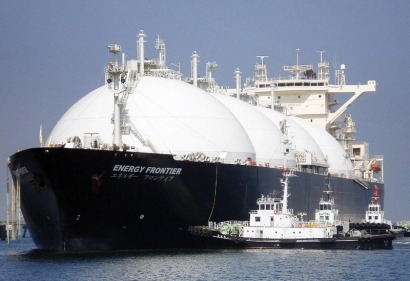
Natural gas has been getting good press coverage lately, most of it positive. As a clean burning fuel that causes much less environmental degradation than coal or oil, including lower greenhouse gas emissions, natural gas may help satisfy the world’s growing energy needs for years to come. But there is more to the natural gas story that is raising concerns among environmentalists and energy experts alike.
In its World Energy Outlook 2011 Special Report, the International Energy Agency (IEA) examines whether we are entering a “golden age of gas.” Applying updated assumptions to earlier analyses, the IEA predicts an optimistic outlook for the natural gas market, underpinned by reduced nuclear power growth, greater consumption of natural gas in the transportation sector, and an ambitious policy for natural gas use in China. The IEA’s Report concludes the following:
• Known conventional natural gas reserves are equivalent to a 120-year supply at the current rate of global consumption, and by 2035, natural gas will represent a full quarter of total global energy use.
• The natural gas reserves will become even greater as extraction of so-called unconventional gases (shale gas, tight gas, and coalbed methane) becomes more technologically feasible.
• Trade among major regions of the world will double by 2035, when China becomes one of the largest importers of liquefied natural gas.
• Compared with other fossil fuels, the combustion of natural gas in power stations results in reduced emissions of greenhouse gases as well as the combustion-related exhausts that lead to urban air pollution problems like smog.
In short, the IEA sees natural gas as an abundant and flexible fuel that offers impressive environmental benefits versus other fossil fuels. In light of these facts, natural gas seems the logical choice for meeting the world’s growing energy requirements. But let’s take another look.
There is no question that natural gas offers substantial environmental benefits when compared with coal and oil. Yet, weighed against renewable energy sources like solar and wind power, natural gas has one major drawback: greenhouse gas emissions. Although natural gas combustion has roughly half the greenhouse gas emissions (mainly carbon dioxide) of coal and oil, these emissions are still quite significant. And when fugitive methane emissions during the extraction and production of natural gas are taken into account, the contribution to global climate change is even greater.

According to the IEA study, natural gas will partially replace coal and oil use in power plants, resulting in lower greenhouse gas emissions. On the other hand, some nuclear power is also replaced, which causes greenhouse emissions to rise, since nuclear power does not generate air pollutants like carbon dioxide. The outcome predicted by the IEA is that with continued growth in the natural gas market, greenhouse gas concentrations in the atmosphere may eventually stabilize at around 650 ppm, causing a long-term global temperature increase of 3.5°C. Many climate change researchers believe that a temperature rise of this magnitude will have serious, if not catastrophic, consequences.
The IEA reports sums it up well: "It follows that an increased share of natural gas in the global energy mix is not enough, on its own and with today’s technology, to avert serious climate change, though natural gas has an important role to play in complementing low-carbon energy solutions by providing the flexibility needed to support a growing renewables component in power generation."
Of course, renewable energy has its own challenges, including investment, infrastructure, and land-use impediments. A recent piece by Robert Bryce in the New York Times (June 7, 2011) notes that to meet California’s goal of obtaining one-third of its electricity from renewable sources by 2020, massive amount of land would be needed – potentially between 5 and 70 times the size of Manhattan. And whereas a conventional natural gas turbine requires just a quarter of a ton of steel for each megawatt of capacity, a megawatt for a modern wind turbine requires as much as 50 tons of steel.
As I see it, an additional 10 to 20 years of experience will be necessary before renewable energy technology is firmly established as the solution to the coming global energy and climate crisis. Additionally, break-through advances in energy efficiency across manufacturing, commercial, consumer, and transportation sectors will be essential over that timeframe. In the interim, natural gas will be important, perhaps critical, to the transition away from dirtier fossil fuels, but it is not the long-term panacea proclaimed today by many of its proponents. What do you think?
Note: The longest-running continuous measurements of atmospheric carbon dioxide concentrations are made at the Mauna Loa Observatory in Hawaii. The latest data are posted here.
Editor’s Note: You can see the recent article on the Fukushima disaster and growth in sustainable energy written by Richard Crume and posted by Renewable Energy Magazine here.
Renewable energy is still seen as a fringe energy source - there are many that are skeptical. Besides research, what do you think needs to happen for renewable energy technology to be "firmly established" as an accepted source in 10-20 years?

